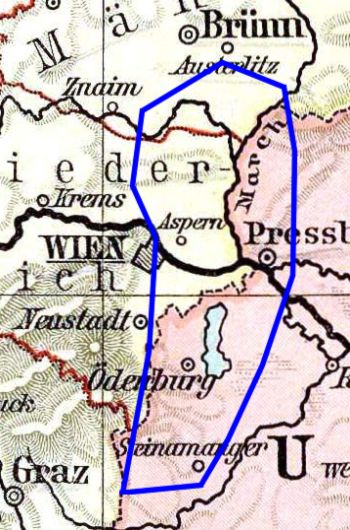|
|
|
The Causes and Conditions of the Croatian Colonist Settlement |
|
|
In the 16th century, after careful estimates 20,000-60,000 Croatian settlers migrated to what is now Burgenland, the eastern part of Lower Austria, parts of Western Hungary, Southern Moravia and Southwestern Slovakia. In multiple waves, streams of refugees and organized settlers mixed together, as preserved documents by Count Batthyány from 1532 report. The first traces of Croatian settlers appear in rental accounts (Property and Fee reports) from 1515 in a district in Eisenstadt. In the 16th century Croatian settlers made up around 30% of the population. The majority of settlers were farmers, but there were also priests, craftsmen, merchants, minor noblemen and lords. The Vlahi or Walachians enjoyed a special legal status. They settled on the southern edge of the Günser mountains in the Oberwart district in 13 market towns and spoke their own dialect. They only had to pay small fees, were free from the Robot, and were consulted by the Batthyány und Erdödy families regarding military and police matters. Unlike the other farmers, they ran an intensive pasture economy and a flourishing cattle and wool trade between Steiermark, Lower Austria, Hungary and Bosnia until the 19th century. |
|
|
by Johannes Graf |
2010.12.17 |

